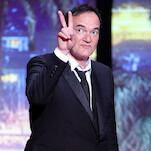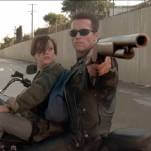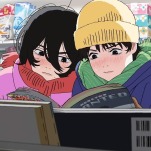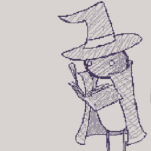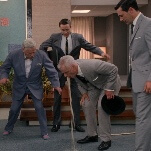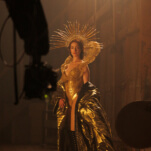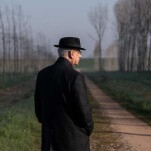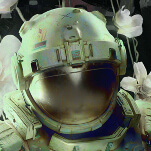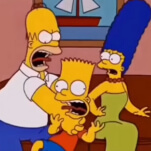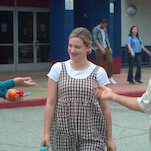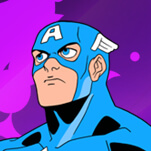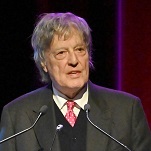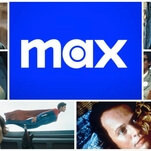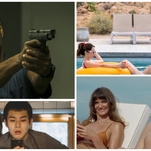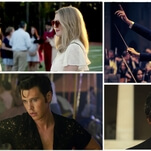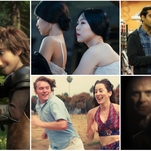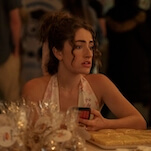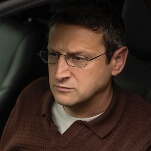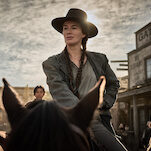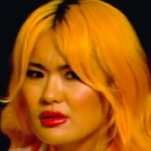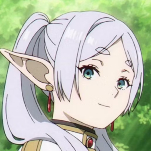Like Kelly Reichardt’s Wendy And Lucy, a movie that the New York Times quipped was rated R “to protect children from learning that people are lonely and life can be hard,” Derek Cianfrance’s Blue Valentine was tagged with an NC-17 for a scene suggesting that sex within the context of a dying marriage can be unfulfilling and even unpleasant. The key ingredient in both movies is Michelle Williams, whose translucent, unaffected performance pierces the audience’s defenses and brings her character’s emotional desperation home. Starting out as a teen actor on the WB’s Dawson’s Creek, Williams has since built one of the most unpredictable and intriguing careers of any American actor. After playing the perplexed housewife to Heath Ledger’s closeted shepherd in Brokeback Mountain (she has a daughter from their years together), she played an Edie Sedgwick-like model in Todd Haynes’ I’m Not There, following that with roles in Synecdoche, New York, Shutter Island, and Lukas Moodysson’s abrasive Mammoth; she will next appear in Reichardt’s sparse frontier allegory Meek’s Cutoff. While in New York for a Blue Valentine press tour (her hair still platinum blonde from playing Marilyn Monroe in the upcoming My Week With Marilyn) Williams talked to The A.V. Club about her long devotion to Blue Valentine, the secrets of Wendy And Lucy’s minimalism, and why Zoe Kazan makes her happy to be alive.
The A.V. Club: Blue Valentine was a project you were attached to for many years, wasn’t it?
Michelle Williams: Many years. A big portion of my life, actually. I was 21 when I read it, maybe 22. And then it took six years from reading it to my first day of shooting.
AVC: What kept you interested in it?
MW: I think that it retained its air of mystery. When I first read it, Derek asked me a question about something my character says. He said, “Why does she say that?” I didn’t know the answer. And I beat myself over the head, wandered the city like a sleuth, like, “Why, why, why!” I couldn’t see it. Then we were going to make the movie a couple years after that, and I go back to the script and the answer is as clear as day. And then the movie falls apart. Then I find another unanswerable question. So each time I revisited the story, I found that I hadn’t outgrown it. I was never sure, because something that you love when you’re 21, you change so much, and I realize that that’s kinda what the movie is about too—that the decision that you make when you’re 21 or 22 is difficult to stand by when you’re 28 or 29.
AVC: You mention that air of mystery being key to keeping you interested in the script. Actors differ on whether they need to understand their characters better than their characters understand themselves. You’re comfortable not knowing?
MW: I think those are two different things. There’s a mystery in you, in me, in my daughter, in my best friend. There is always going to be something just out of reach. It’s not so much that I couldn’t answer questions about [the character], because the way that we worked, with all of this improvisation, you had to be able to know her well enough to respond as she would in the moment. But it’s something about not being beyond the material, in a way. I find that over and over again. I find that each job that I do, the thing that gets me there is when I’m not smarter than it, when I don’t know instantly how that thing is made. Because if I do, then it’s boring. Or it would be simple.
AVC: Wendy and Lucy is really an epochal performance, and I think it’s one a lot of your fellow actors have responded to strongly—Zoe Kazan for one. Not a lot of people saw that movie…
MW: [Laughs.] No, they didn’t.
AVC: … but evidently a lot of the ones who did were actors. It’s such a bold choice to play it with such simplicity, so much trust to place in the audience.
MW: Oh, Zoe Kazan—I’d move back to Brooklyn for her. She makes me happy with my life. Knowing her, being at her dinner table, going on a walk with her is the best of all possible worlds. I remember the first day, first scene, first shot, on Wendy And Lucy. I’m doing what I think of as minimal, the understated thing. Kelly comes up to me and goes, “Too much.” I said, “I didn’t do anything. I looked at the clock. I didn’t… I hardly moved. I didn’t do anything.” She said, “I know, I know. But it was too much.” So I went within and after that… “You sure about that?” And she said, “Yeah, yeah. Trust me.” After that day, that was the choice we made together, and I had the courage because of who I was following, because I have so much respect for her. Her vision of what she wants. And I know what her taste is at this point. You know, they were kind of opposites. Working on [Blue Valentine] was all about freedom. No boundaries, no limitations. Offer up anything, everything is fair game. That has its beauty for sure, and I wish I could do it all over again; I would want to make more use of that freedom, because it’s rare. When you work with Kelly, there is a very specific frame in mind, a very specific tone. The beauty in that is that limitations can be freeing. It’s like knowing the steps to a dance, and then you can add your own kind of expression to it. The form can be liberating. So there were two very separate working styles.
AVC: The response to Blue Valentine at Sundance was very strong, but one of the hesitations people had is they weren’t sure what they’re supposed to take away from it. Is there a moral to the story for you?
MW: No. Not at all. It’s just a question mark. It’s a question mark in the film and it’s a question mark in your life. Derek says it’s like that Motown song, “Where Did Our Love Go?” There’s clues and there’s suspects, but you have to be the detective.

